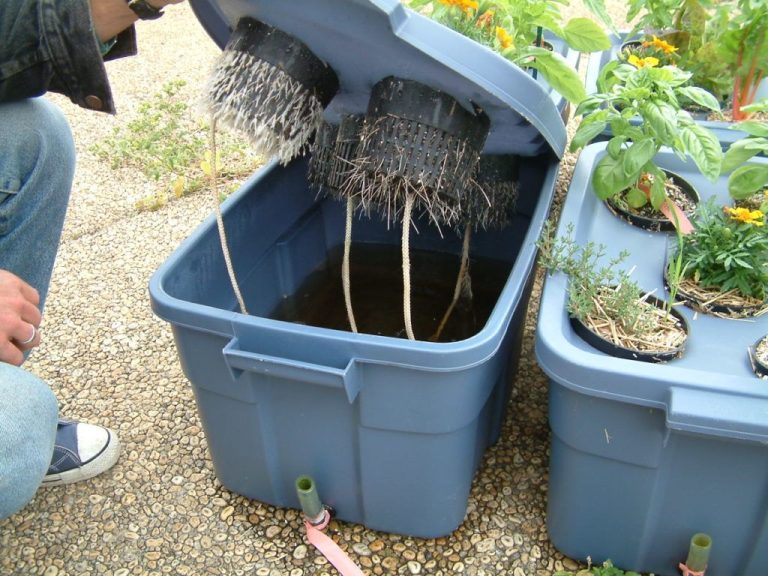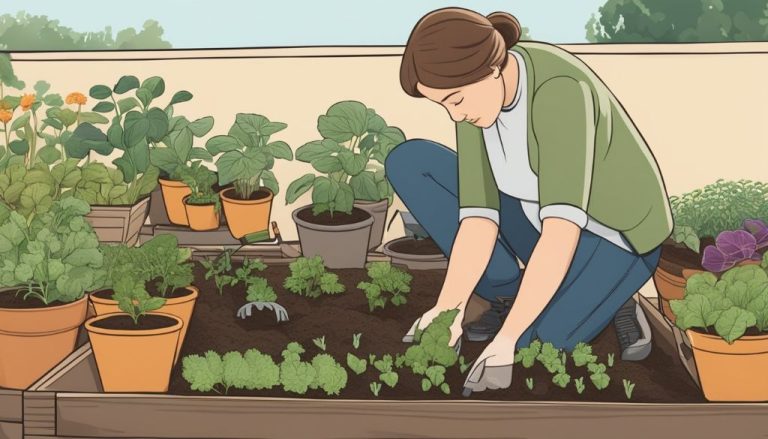Vertical Gardening For Edibles: Maximizing Space And Yield
Vertical gardening refers to the practice of growing plants vertically on structures such as trellises, walls, fences, columns, or stacks to maximize space utilization (https://www.planetnatural.com/10-benefits-of-vertical-gardening/). This technique allows gardeners to grow more plants in a smaller footprint, making it ideal for urban areas, balconies, patios, and other spaces with limited horizontal space.
Vertical gardening provides numerous benefits, especially for gardeners with confined spaces. Some key advantages include: improved yield per square foot, efficient use of vertical airspace, reduced weed and pest pressure, easier maintenance, aesthetic appeal, and microclimate benefits like sun exposure, airflow, and insulation (https://www.conserve-energy-future.com/benefits-vertical-garden.php).
Plants can be grown vertically using structures like trellises, cages, stakes, walls, living walls, stacked pots, and vertical hydroponic or aeroponic systems. Choosing the right technique depends on factors like space, budget, aesthetic preferences, and crops being grown. An overview of common vertical gardening structures and techniques will be provided in the next sections.
Suitable Crops for Vertical Gardening
When planning which crops to grow vertically, it’s important to choose varieties that naturally vine or climb. Herbs, leafy greens, tomatoes, cucumbers, beans, and certain root crops are especially well-suited for vertical gardening.
Many fresh herbs like thyme, oregano, mint, rosemary, and basil thrive when grown vertically, maximizing limited space. Leafy greens like kale, spinach, chard, lettuce, and Asian greens can also produce abundant crops on trellises or cages.https://www.almanac.com/how-grow-vertically-your-garden
Vining tomato varieties can climb upward when staked or supported by cages.Similarly, cucumbers excel when trellised vertically. Pole beans, peas, and sweet potatoes will readily climb vertical structures to save space.
Certain root vegetables like radishes, carrots, and beets can be grown in vertical planters, allowing their edible roots to grow downward while stretching upward for light and air circulation. With the right crops and setup, vertical gardening maximizes limited yard or balcony space for abundant edible harvests.
Structures for Vertical Gardening
There are several structures that can be used for vertical gardening to maximize limited space. The main types include:
Wall-mounted systems
Wall-mounted vertical garden systems allow you to take advantage of vertical space on fences, walls or other structures. Modular wall planter boxes, wall-mounted trellises and wire panels are common options.[1] These allow climbing plants, vining crops, or container gardens to be arranged vertically.
Freestanding towers
Freestanding vertical gardening towers provide built-in shelves, pockets or cages to hold containers at different heights. Towers made from metal, plastic or wood can be placed in yards, patios or on balconies. Towers allow stacking plants and containers efficiently in a small footprint.[1]
DIY structures
With some creativity, you can construct custom vertical gardens from materials like PVC pipe, wood, poles, ladders and more. These DIY structures are often more budget-friendly. You can customize them to your space and desired scale.[1]
The key is choosing or building a sturdy vertical structure tailored to your site conditions and gardening needs.
[1] https://www.gardendesign.com/vertical/
Soil, Fertilizer, and Watering
Choosing the right soil is critical for vertical gardening success. The soil needs to drain well while still retaining moisture and nutrients. Many vertical gardeners recommend a soilless potting mix rather than standard garden soil. Potting mixes are lightweight and allow excess water to drain out of the vertically oriented beds (1).

Look for a potting mix that contains ingredients like peat moss, perlite, vermiculite, coco coir, or compost. These help aerate the soil while increasing water and nutrient retention. Avoid heavy clay soils, as these will become overly saturated. Aim for a mix that drains well but still holds some moisture (1)
.
Adding a slow-release fertilizer to the potting mix provides nutrients over time. You can also use liquid fertilizers applied through the irrigation system if needed. Vertical gardens often require more frequent fertilization than in-ground beds (2).
Proper watering is also key for vertical gardening. Drip irrigation or soaker hoses work better than overhead watering, which can cause soil to slough off. Place emitters at the top of each tower or column to allow water to flow down through the entire structure. Test drainage periodically by overwatering – excess should run out the bottom right away (2).
(1) https://commercial.richgro.com.au/news/soil-requirements-for-growing-vertical-gardens/
(2) https://pittmoss.com/how-to-develop-a-vertical-garden/
Sunlight Considerations
Getting adequate sunlight is crucial for healthy plants and maximizing yields in vertical gardening. Most edible plants need at least 6 hours of direct sun per day for proper growth and fruit production. When selecting a location for your vertical garden, aim for an area with full sun exposure and minimal shading from buildings, trees, etc.
For plants like tomatoes, peppers, cucumbers, and leafy greens that require abundant light, position your vertical garden where it will receive full sun for most of the day. Morning sun is ideal as it helps dry dew from the leaves, reducing disease. If dealing with partial shade, focus your sun-loving plants on the sunniest sections of your vertical garden.
For plants that tolerate some shade like herbs, kale, spinach, and root vegetables, a vertical garden with at least 4-6 hours of sun can work. Just be aware yields may be lower. Supplement with grow lights if needed.
If your vertical garden area only gets 2-4 hours of sunlight, choose shade-tolerant crops like lettuce, swiss chard, arugula, mustard greens, and herbs like mint, oregano, thyme, and parsley. You can also install mirrors or reflective material around the area to maximize light exposure.
No matter how much natural sunlight your site gets, rotating plants helps equalize light distribution so no one area of your vertical garden remains perpetually shaded. Regular pruning of overhanging branches and vegetation helps allow more sunlight to reach your plants too.
By considering sunlight conditions and selecting appropriate crops, you can maximize yields even in partially shaded vertical gardens. Careful planting configurations, mirrors, and grow lights also provide solutions for optimizing light exposure.
Pest and Disease Management
Vertical gardens can help deter some common vegetable pests, but you may still face issues with aphids, spider mites, cabbage worms, squash bugs, and tomato hornworms. Preventative measures like ensuring proper sunlight, air circulation, and drainage can make conditions less favorable for pests.
Introduce beneficial insects like ladybugs, lacewings, and predatory mites to naturally control pest populations. You can also make organic sprays with things like neem oil, insecticidal soap, or garlic-pepper mixtures to repel or kill pests (Source).
For fungal diseases like powdery mildew or blights, select resistant varieties and space plants appropriately. Remove any infected material and avoid overhead watering. Organic fungicides containing baking soda or sulfur can help prevent fungal spore germination.
Pollination Needs
When planting a vertical garden, it’s important to consider the pollination needs of your crops. Some plants are self-pollinating, meaning they can pollinate themselves without any outside help. These include beans, peas, tomatoes, peppers, and eggplants. However, many other edible plants require cross-pollination from insects or wind to produce fruit and seeds. These include cucumbers, squash, melons, and most fruit trees.
For cross-pollinating plants, introducing pollinators is key for maximizing fruit production. Bees are the most well-known pollinators, and attracting native bees to your vertical garden can dramatically improve yields. Native bees are often more efficient pollinators than honeybees. Other important pollinators include butterflies, moths, wasps, beetles, bats, and hummingbirds. Having a diversity of flowering plants that bloom throughout the season will help attract and sustain pollinators.
When designing a vertical edible garden, devote some space to flowering plants that will attract pollinators. Herbs like lavender, thyme, oregano and sage are great choices. Lettuce and other leafy greens can also blossom and provide pollen. Place flowering plants near vegetables and fruits that require cross-pollination. This will ensure your pollinator-friendly plants are located where they’ll do the most good.
Sources:
https://www.earthtowergarden.com/post/2020/04/17/help-save-the-bees-with-your-vertical-garden
Harvesting and Maintenance
To maximize yields in a vertical gardening system, ongoing maintenance and proper harvesting techniques are essential. Different crops have different harvesting requirements.
Leafy greens like lettuce and kale can be continually harvested by picking outer leaves while allowing the plant to continue growing. Fruiting crops like tomatoes and cucumbers should be picked once ripe to encourage further production. Vining plants like beans and peas should have pods harvested frequently to promote more pod growth.
For best results, use pruners or scissors for a clean cut when harvesting. Avoid tearing leaves or stems, as this can damage the plant. Check plants daily for ripe fruits and vegetables ready for picking.
Regular maintenance like weeding, pruning, and pest control is important. Weeds compete for water and nutrients, so should be promptly removed. Pruning encourages bushier, more productive plants. Scout for pests and diseases and take preventative or curative action as needed.
During peak growing season, vegetation may need daily watering, depending on climate conditions. Fertilize according to package directions to provide plants sufficient nutrients. As the growing season winds down, reduce watering and cease fertilizing.
With attentive care and harvests, a vertical gardening system can achieve impressive yields from a compact footprint, maximizing plant growth in limited space.
Tips for Success
Choosing the right varieties of plants is crucial for success with vertical gardening. Focus on compact, determinate vegetables that don’t require a lot of spreading room like tomatoes, peppers, eggplant, beans, and lettuce. Dwarf or patio varieties of crops are ideal. Avoid sprawling or vining plants like squash, melons, cucumbers, and indeterminate tomatoes.
Consistent watering is essential, especially with vertical structures that have limited soil capacity. Drip irrigation systems or self-watering containers work well to maintain optimal moisture. Check soil frequently and water when the top few inches become dry.
Pruning and training plants is important to restrict size and encourage upward, rather than outward, growth. Remove suckers and pinch back vine tips. Use plant ties or trellises to support and direct growth vertically.
For more tips, see https://themicrogardener.com/15-helpful-design-tips-for-vertical-gardens/.
Maximizing Space and Yields
Vertical gardening allows you to maximize the yield from a small gardening space by growing upwards rather than outwards. There are several techniques to get the most out of a vertical garden:
Interplanting involves planting quick-growing vegetables alongside slower-growing ones. For example, radishes can be planted near broccoli or Brussels sprouts. The radishes will be ready to harvest before the broccoli crowds them out. This technique takes advantage of empty spaces and allows multiple harvests from one area (https://www.almanac.com/how-grow-vertically-your-garden).
Succession planting means replanting a plot as soon as one crop is harvested. For example, peas can be planted in early spring, followed by beans or squash in summer. This ensures constant production from a small space. Staggering plantings by 2-4 weeks extends harvests further.
Stacking vertical structures maximizes space utilization. Many vertical gardens are designed with multiple towers or tiers connected by trellises. Growing different crops on each level allows intensive production. For example, tall climbing crops like pole beans can go at the top, while dwarf or bush crops can go on the bottom levels (https://gardens.theownerbuildernetwork.co/2022/12/27/vertical-gardening/).
Using these techniques together results in maximum yields from limited vertical gardening space.





